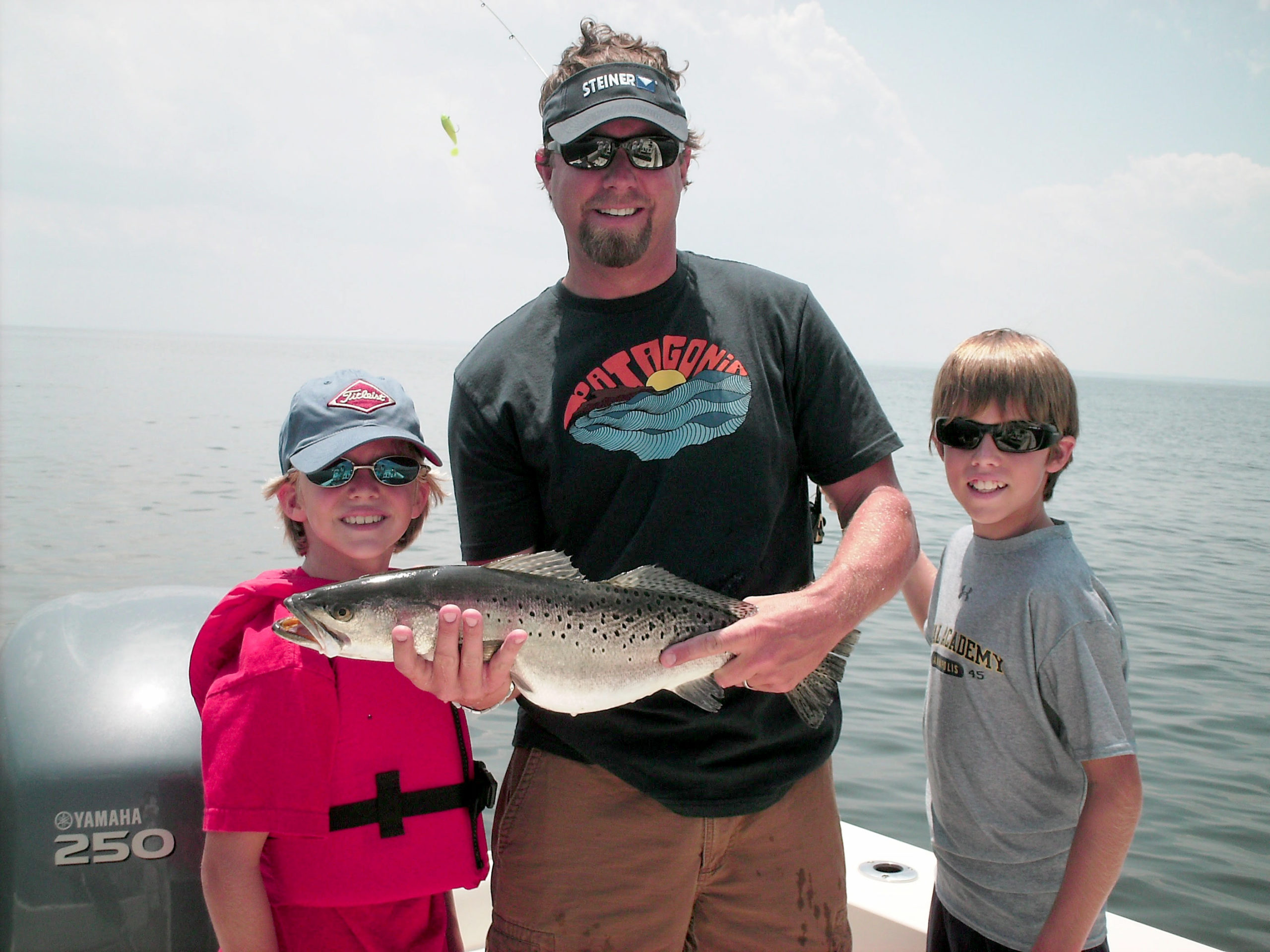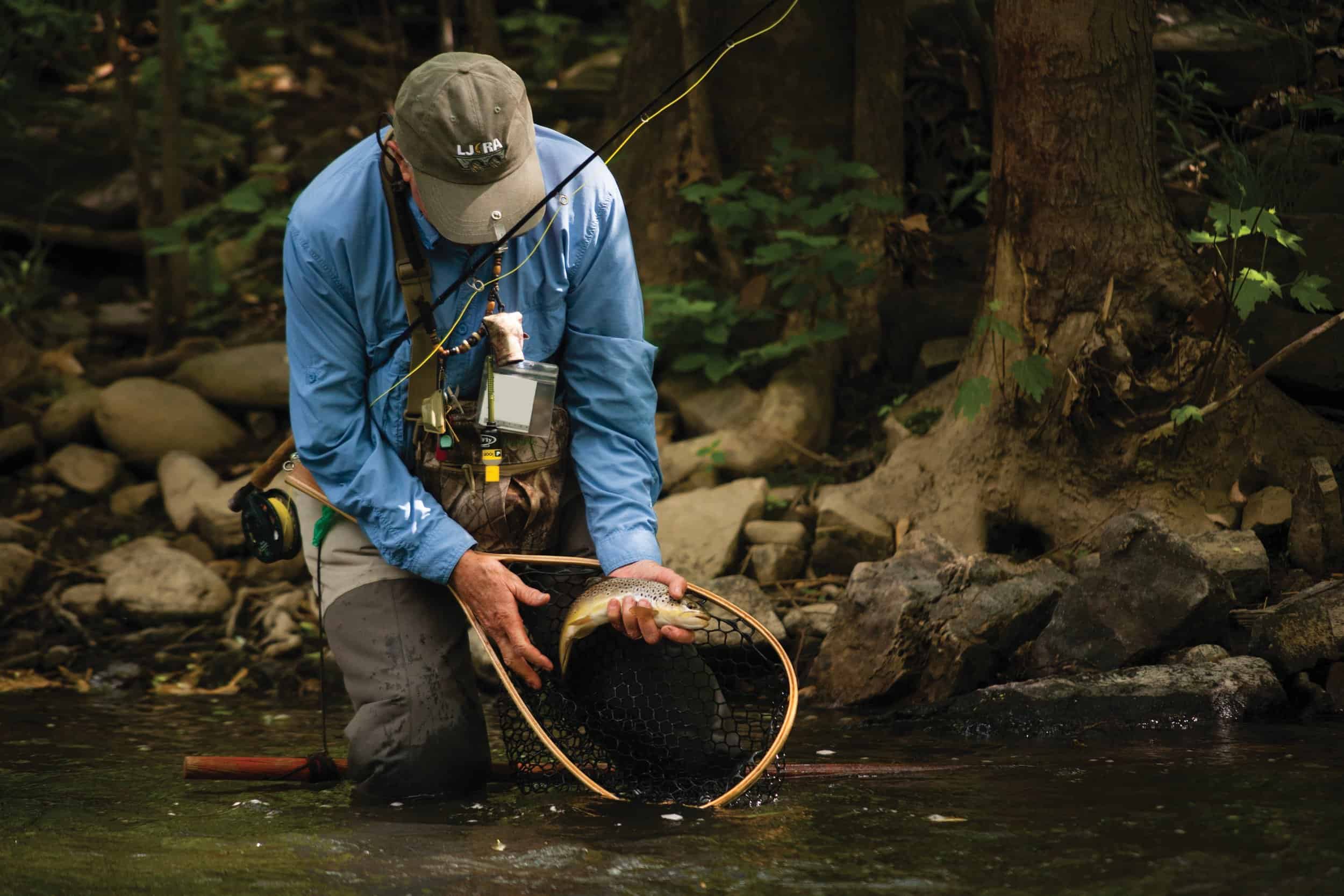by Chris D. Dollar
Late last summer, the Chesapeake’s surface was so calm it gave off a mirage-like glow, as if photons took a shortcut over the “slick cam” waters. Some might call it idyllic, and they’d be right, save for the tiny objects that flailed across the fading light like metallic glass splinters.
These weren’t shards of glass at all but panicked silversides summoning every last ounce of energy to try to escape the marauding bluefish and Spanish mackerel that pursued them with an unbridled fury rivaling Genghis Khan’s cavalrymen.
Spend enough time prowling the open Bay and its river mouths from summer into autumn and you’re bound to enjoy a front-row seat for this unscripted mayhem—the Blitz. To the uninitiated, (and bless you, for you clearly need our heartfelt compassion for having made such poor life choices to have missed out on this wildly intoxicating event) “blitz” refers to a feeding frenzy where frantic baitfish fly out of the water every which way but loose to avoid the jaws of death. Meanwhile, their tormentors, usually stripers and blues in the Chesapeake but occasionally Spanish mackerel, are in the throes of frenetic gluttony. They snap at flesh, fins, air and anything that moves.
Bay anchovies, silversides and young-of-the-year bunker (juvenile menhaden) are the typical menu items of those Chesapeake gamefish this time of year. Like many fishermen who log enough hours on the water, I’ve cast into hundreds of gamefish schools as they ravage these forage species, and it never gets old.
Whenever I hear an angler disparage bluefish, and I do every year, it never fails to perplex me. Who doesn’t admire the fighting spirit of such a wild creature? And they’re great eating when freshly grilled or smoked. So strong is a bluefish’s drive to survive that many times I’ve been duped into believing I had a true bruiser on the other end of my line when it was only a snapper of a pound or so.
By Memorial Day weekend, the first waves of migrating bluefish arrive in the upper Chesapeake. They came early this year, and their size was impressive. Bluefish are the sole members of the pomatomidae family, and are marked by subtle yet pretty green-blue hues along the dorsal and silvery-white down along the belly. I can tell you that these piscatorial hooligans come equipped with ribbon-wire incisors, and they aren’t afraid to wield them. Though the scar on my left thumb fades each summer since it formed 15 years ago, it’s a reminder that, given the chance, a blue will exact its revenge on the careless. And can you blame them? If I were hauled over the gunwale by my lips I’d be looking for some payback, too.
Also in the summer blitz mix will be Spanish mackerels, which have forked tails similar to tunas and wahoo, their pelagic relatives. Because mackerel schools roam at a fast clip, they’re notorious for being thick in an area during one tide cycle, and gone the next. Most Spanish mackerel in Maryland waters are under two pounds. Farther south they routinely top four pounds.
A few years ago, during an all-out scrum off Kent Island, several macks greyhounded through the bluefish fray, much to my and my fly-fishing client’s delight. Though it was almost exclusively a bluefish game, she finally hooked into a mack, but it came unbuttoned after a minute of fighting. So goes the game sometimes. She got another shot, and although a fairly inexperienced fly-rodder, she listened well and did everything right and remained connected by keeping tension on the line, dipping the rod tip when it jumped, and reversing the angle of her rod to turn its head and tire it out. Just when we thought the fish was ready to quit, it shot under the bow, then double backed and made a mad dash to the stern with a euphoric leap through the still summer air. The mack’s engine stalled a bit off the starboard quarter, yet as I dipped the net below the surface it exploded through the water as if fueled by nitrous oxide in a final, desperate attempt to reach open water. “That’s a nice fish—Don’t lose it!” I yelled, in an obnoxiously obvious understatement that still ranks as one of my worst. And she didn’t. Once to the boat it shimmered like a doubloon, its iridescent flanks, elliptical orange spots and green to light yellow hues throughout its vibrant body. It was magnificent.
Anglers who troll catch more Spanish mackerel than fly- and light-tackle fishermen do. Gold or silver Clark’s or Drones spoons in sizes #0 and #00 trolled on size one and two planers or with inline sinkers are what most fishermen use. Bump up your boat speed to six or seven knots.
For sheer excitement, nothing beats catching blues and Spanish macks on eight-weight fly gear or on 15-pound test light tackle. Sleek silver or gold spoons are good bets. When fly fishing, any pattern that resembles a rain minnow will work. Flies tied Clouser-style as well as Gurglers and epoxy flies with lots of flash chucked on an intermediate line are my top choices. Keep in mind that Spanish mackerel have sharp teeth, though they don’t seem as vengeful as blues in my interactions with them.
As a fishing generalist by avocation and vocation, I enjoy almost all methods of angling. However, throwing top-water lures is my raison d’être. When presented correctly, blues and macks will pounce on a splashy morsel on the surface. Few experiences in saltwater fishing are as memorable as watching a powerful predator explode on a top-water plug.
From bedlam comes joy. I’ve caught bluefish on a variety of plugs, including Smack-its, Yo-Zuris, and Super Spook Jrs., and even a few fish on Halco’s Roosta poppers. Using a fly trailer often adds to my fun. I typically replace treble hooks with singles to reduce the risk of injury to both me and any fish not destined for the smoker. This also gets me back to the action more quickly after catching a fish.
July and August are often the most exhilarating months to experience the wildness of the Chesapeake, when its creatures are on the move and on the feed, triggered by temperature swings and shortening days. We can expect the blues to harass baitfish well into fall, but how long the macks will stick around is anyone’s guess. The biologists tell us that they are more sensitive to salinity and temperature than the blues.
Therefore, waste no time in venturing out. Crank up Lowell George’s live version of Spanish Moon, double check your knots, cast into the action and hang on. A blues and mack blitz can pop up anytime, anywhere. And it matters little if it’s over too soon. Savor the moment when feeding fish churn the Chesapeake into a raucous, salty froth and silvery missiles leap over bluefish. If that doesn’t get your motor running, sell your rods. They say golf is a tranquil hobby.




